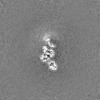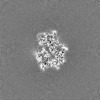[English] 日本語
 Yorodumi
Yorodumi- EMDB-47156: The structure of HDAC2-CoREST in complex with KBTBD4R313PRR mutant -
+ Open data
Open data
- Basic information
Basic information
| Entry |  | |||||||||
|---|---|---|---|---|---|---|---|---|---|---|
| Title | The structure of HDAC2-CoREST in complex with KBTBD4R313PRR mutant | |||||||||
 Map data Map data | ||||||||||
 Sample Sample |
| |||||||||
 Keywords Keywords | protein degradation / E3 ligase / Neo-substrate / cancer mutation / LIGASE | |||||||||
| Function / homology |  Function and homology information Function and homology informationpositive regulation of male mating behavior / protein de-2-hydroxyisobutyrylase activity / protein lysine delactylase activity / histone H4K16 deacetylase activity, hydrolytic mechanism / histone H4K5 deacetylase activity, hydrolytic mechanism / histone H4K8 deacetylase activity, hydrolytic mechanism / histone H3K4 deacetylase activity, hydrolytic mechanism / histone H3K14 deacetylase activity, hydrolytic mechanism / p75NTR negatively regulates cell cycle via SC1 / histone H4K12 deacetylase activity, hydrolytic mechanism ...positive regulation of male mating behavior / protein de-2-hydroxyisobutyrylase activity / protein lysine delactylase activity / histone H4K16 deacetylase activity, hydrolytic mechanism / histone H4K5 deacetylase activity, hydrolytic mechanism / histone H4K8 deacetylase activity, hydrolytic mechanism / histone H3K4 deacetylase activity, hydrolytic mechanism / histone H3K14 deacetylase activity, hydrolytic mechanism / p75NTR negatively regulates cell cycle via SC1 / histone H4K12 deacetylase activity, hydrolytic mechanism / epidermal cell differentiation / negative regulation of dendritic spine development / positive regulation of megakaryocyte differentiation / histone decrotonylase activity / fungiform papilla formation / histone H3K9 deacetylase activity, hydrolytic mechanism / behavioral response to ethanol / positive regulation of interleukin-1 production / NuRD complex / negative regulation of MHC class II biosynthetic process / regulation of cell fate specification / negative regulation of transcription by competitive promoter binding / EGR2 and SOX10-mediated initiation of Schwann cell myelination / negative regulation of stem cell population maintenance / ESC/E(Z) complex / histone deacetylase / regulation of stem cell differentiation / cardiac muscle hypertrophy / cellular response to dopamine / STAT3 nuclear events downstream of ALK signaling / DNA repair complex / response to caffeine / protein lysine deacetylase activity / Hydrolases; Acting on carbon-nitrogen bonds, other than peptide bonds; In linear amides / embryonic digit morphogenesis / histone deacetylase activity / positive regulation of intracellular estrogen receptor signaling pathway / Notch-HLH transcription pathway / Sin3-type complex / positive regulation of stem cell population maintenance / histone methyltransferase complex / eyelid development in camera-type eye / dendrite development / odontogenesis of dentin-containing tooth / response to amyloid-beta / positive regulation of proteolysis / RNA Polymerase I Transcription Initiation / positive regulation of oligodendrocyte differentiation / histone deacetylase complex / Regulation of MECP2 expression and activity / positive regulation of collagen biosynthetic process / hair follicle placode formation / response to hyperoxia / NF-kappaB binding / FOXO-mediated transcription of oxidative stress, metabolic and neuronal genes / progesterone receptor signaling pathway / Transcriptional regulation of brown and beige adipocyte differentiation by EBF2 / positive regulation of epithelial to mesenchymal transition / cellular response to transforming growth factor beta stimulus / MECP2 regulates neuronal receptors and channels / Regulation of TP53 Activity through Acetylation / cellular response to retinoic acid / heat shock protein binding / transcription repressor complex / response to amphetamine / SUMOylation of chromatin organization proteins / negative regulation of cell migration / negative regulation of DNA-binding transcription factor activity / ERCC6 (CSB) and EHMT2 (G9a) positively regulate rRNA expression / Regulation of PTEN gene transcription / erythrocyte differentiation / Regulation of endogenous retroelements by KRAB-ZFP proteins / Regulation of endogenous retroelements by Piwi-interacting RNAs (piRNAs) / HDACs deacetylate histones / response to nicotine / response to cocaine / negative regulation of transforming growth factor beta receptor signaling pathway / promoter-specific chromatin binding / circadian regulation of gene expression / NoRC negatively regulates rRNA expression / protein modification process / NOTCH1 Intracellular Domain Regulates Transcription / Constitutive Signaling by NOTCH1 PEST Domain Mutants / Constitutive Signaling by NOTCH1 HD+PEST Domain Mutants / histone deacetylase binding / cellular response to hydrogen peroxide / positive regulation of tumor necrosis factor production / transcription corepressor activity / heterochromatin formation / negative regulation of neuron projection development / cellular response to heat / chromatin organization / Factors involved in megakaryocyte development and platelet production / response to lipopolysaccharide / transcription regulator complex / RNA polymerase II-specific DNA-binding transcription factor binding / histone binding / Potential therapeutics for SARS / chromosome, telomeric region / chromatin remodeling Similarity search - Function | |||||||||
| Biological species |  Homo sapiens (human) Homo sapiens (human) | |||||||||
| Method | single particle reconstruction / cryo EM / Resolution: 2.87 Å | |||||||||
 Authors Authors | Xie X / Liau B / Zheng N | |||||||||
| Funding support |  United States, 1 items United States, 1 items
| |||||||||
 Citation Citation |  Journal: Nature / Year: 2025 Journal: Nature / Year: 2025Title: Converging mechanism of UM171 and KBTBD4 neomorphic cancer mutations. Authors: Xiaowen Xie / Olivia Zhang / Megan J R Yeo / Ceejay Lee / Ran Tao / Stefan A Harry / N Connor Payne / Eunju Nam / Leena Paul / Yiran Li / Hui Si Kwok / Hanjie Jiang / Haibin Mao / Jennifer L ...Authors: Xiaowen Xie / Olivia Zhang / Megan J R Yeo / Ceejay Lee / Ran Tao / Stefan A Harry / N Connor Payne / Eunju Nam / Leena Paul / Yiran Li / Hui Si Kwok / Hanjie Jiang / Haibin Mao / Jennifer L Hadley / Hong Lin / Melissa Batts / Pallavi M Gosavi / Vincenzo D'Angiolella / Philip A Cole / Ralph Mazitschek / Paul A Northcott / Ning Zheng / Brian B Liau /   Abstract: Cancer mutations can create neomorphic protein-protein interactions to drive aberrant function. As a substrate receptor of the CULLIN3-RING E3 ubiquitin ligase complex, KBTBD4 is recurrently mutated ...Cancer mutations can create neomorphic protein-protein interactions to drive aberrant function. As a substrate receptor of the CULLIN3-RING E3 ubiquitin ligase complex, KBTBD4 is recurrently mutated in medulloblastoma, the most common embryonal brain tumour in children. These mutations impart gain-of-function to KBTBD4 to induce aberrant degradation of the transcriptional corepressor CoREST. However, their mechanism remains unresolved. Here we establish that KBTBD4 mutations promote CoREST degradation through engaging HDAC1/2 as the direct target of the mutant substrate receptor. Using deep mutational scanning, we chart the mutational landscape of the KBTBD4 cancer hotspot, revealing distinct preferences by which insertions and substitutions can promote gain-of-function and the critical residues involved in the hotspot interaction. Cryo-electron microscopy analysis of two distinct KBTBD4 cancer mutants bound to LSD1-HDAC1-CoREST reveals that a KBTBD4 homodimer asymmetrically engages HDAC1 with two KELCH-repeat β-propeller domains. The interface between HDAC1 and one of the KBTBD4 β-propellers is stabilized by the medulloblastoma mutations, which insert a bulky side chain into the HDAC1 active site pocket. Our structural and mutational analyses inform how this hotspot E3-neosubstrate interface can be chemically modulated. First, we unveil a converging shape-complementarity-based mechanism between gain-of-function E3 mutations and a molecular glue degrader, UM171. Second, we demonstrate that HDAC1/2 inhibitors can block the mutant KBTBD4-HDAC1 interface and proliferation of KBTBD4-mutant medulloblastoma cells. Altogether, our work reveals the structural and mechanistic basis of cancer mutation-driven neomorphic protein-protein interactions. | |||||||||
| History |
|
- Structure visualization
Structure visualization
| Supplemental images |
|---|
- Downloads & links
Downloads & links
-EMDB archive
| Map data |  emd_47156.map.gz emd_47156.map.gz | 203.9 MB |  EMDB map data format EMDB map data format | |
|---|---|---|---|---|
| Header (meta data) |  emd-47156-v30.xml emd-47156-v30.xml emd-47156.xml emd-47156.xml | 19.8 KB 19.8 KB | Display Display |  EMDB header EMDB header |
| FSC (resolution estimation) |  emd_47156_fsc.xml emd_47156_fsc.xml | 12.7 KB | Display |  FSC data file FSC data file |
| Images |  emd_47156.png emd_47156.png | 51.7 KB | ||
| Filedesc metadata |  emd-47156.cif.gz emd-47156.cif.gz | 7.1 KB | ||
| Others |  emd_47156_half_map_1.map.gz emd_47156_half_map_1.map.gz emd_47156_half_map_2.map.gz emd_47156_half_map_2.map.gz | 200.3 MB 200.2 MB | ||
| Archive directory |  http://ftp.pdbj.org/pub/emdb/structures/EMD-47156 http://ftp.pdbj.org/pub/emdb/structures/EMD-47156 ftp://ftp.pdbj.org/pub/emdb/structures/EMD-47156 ftp://ftp.pdbj.org/pub/emdb/structures/EMD-47156 | HTTPS FTP |
-Validation report
| Summary document |  emd_47156_validation.pdf.gz emd_47156_validation.pdf.gz | 849.6 KB | Display |  EMDB validaton report EMDB validaton report |
|---|---|---|---|---|
| Full document |  emd_47156_full_validation.pdf.gz emd_47156_full_validation.pdf.gz | 849.2 KB | Display | |
| Data in XML |  emd_47156_validation.xml.gz emd_47156_validation.xml.gz | 21.6 KB | Display | |
| Data in CIF |  emd_47156_validation.cif.gz emd_47156_validation.cif.gz | 28 KB | Display | |
| Arichive directory |  https://ftp.pdbj.org/pub/emdb/validation_reports/EMD-47156 https://ftp.pdbj.org/pub/emdb/validation_reports/EMD-47156 ftp://ftp.pdbj.org/pub/emdb/validation_reports/EMD-47156 ftp://ftp.pdbj.org/pub/emdb/validation_reports/EMD-47156 | HTTPS FTP |
-Related structure data
| Related structure data |  9dtqMC  8vpqC  8vrtC M: atomic model generated by this map C: citing same article ( |
|---|---|
| Similar structure data | Similarity search - Function & homology  F&H Search F&H Search |
- Links
Links
| EMDB pages |  EMDB (EBI/PDBe) / EMDB (EBI/PDBe) /  EMDataResource EMDataResource |
|---|---|
| Related items in Molecule of the Month |
- Map
Map
| File |  Download / File: emd_47156.map.gz / Format: CCP4 / Size: 216 MB / Type: IMAGE STORED AS FLOATING POINT NUMBER (4 BYTES) Download / File: emd_47156.map.gz / Format: CCP4 / Size: 216 MB / Type: IMAGE STORED AS FLOATING POINT NUMBER (4 BYTES) | ||||||||||||||||||||||||||||||||||||
|---|---|---|---|---|---|---|---|---|---|---|---|---|---|---|---|---|---|---|---|---|---|---|---|---|---|---|---|---|---|---|---|---|---|---|---|---|---|
| Projections & slices | Image control
Images are generated by Spider. | ||||||||||||||||||||||||||||||||||||
| Voxel size | X=Y=Z: 0.84 Å | ||||||||||||||||||||||||||||||||||||
| Density |
| ||||||||||||||||||||||||||||||||||||
| Symmetry | Space group: 1 | ||||||||||||||||||||||||||||||||||||
| Details | EMDB XML:
|
-Supplemental data
-Half map: #2
| File | emd_47156_half_map_1.map | ||||||||||||
|---|---|---|---|---|---|---|---|---|---|---|---|---|---|
| Projections & Slices |
| ||||||||||||
| Density Histograms |
-Half map: #1
| File | emd_47156_half_map_2.map | ||||||||||||
|---|---|---|---|---|---|---|---|---|---|---|---|---|---|
| Projections & Slices |
| ||||||||||||
| Density Histograms |
- Sample components
Sample components
-Entire : LHC-KBTBD4PRRmutant
| Entire | Name: LHC-KBTBD4PRRmutant |
|---|---|
| Components |
|
-Supramolecule #1: LHC-KBTBD4PRRmutant
| Supramolecule | Name: LHC-KBTBD4PRRmutant / type: complex / ID: 1 / Parent: 0 / Macromolecule list: #1-#3 |
|---|---|
| Source (natural) | Organism:  Homo sapiens (human) Homo sapiens (human) |
-Macromolecule #1: Histone deacetylase 2
| Macromolecule | Name: Histone deacetylase 2 / type: protein_or_peptide / ID: 1 / Number of copies: 1 / Enantiomer: LEVO / EC number: histone deacetylase |
|---|---|
| Source (natural) | Organism:  Homo sapiens (human) Homo sapiens (human) |
| Molecular weight | Theoretical: 55.311961 KDa |
| Recombinant expression | Organism:  |
| Sequence | String: AYSQGGGKKK VCYYYDGDIG NYYYGQGHPM KPHRIRMTHN LLLNYGLYRK MEIYRPHKAT AEEMTKYHSD EYIKFLRSIR PDNMSEYSK QMQRFNVGED CPVFDGLFEF CQLSTGGSVA GAVKLNRQQT DMAVNWAGGL HHAKKSEASG FCYVNDIVLA I LELLKYHQ ...String: AYSQGGGKKK VCYYYDGDIG NYYYGQGHPM KPHRIRMTHN LLLNYGLYRK MEIYRPHKAT AEEMTKYHSD EYIKFLRSIR PDNMSEYSK QMQRFNVGED CPVFDGLFEF CQLSTGGSVA GAVKLNRQQT DMAVNWAGGL HHAKKSEASG FCYVNDIVLA I LELLKYHQ RVLYIDIDIH HGDGVEEAFY TTDRVMTVSF HKYGEYFPGT GDLRDIGAGK GKYYAVNFPM RDGIDDESYG QI FKPIISK VMEMYQPSAV VLQCGADSLS GDRLGCFNLT VKGHAKCVEV VKTFNLPLLM LGGGGYTIRN VARCWTYETA VAL DCEIPN ELPYNDYFEY FGPDFKLHIS PSNMTNQNTP EYMEKIKQRL FENLRMLPHA PGVQMQAIPE DAVHEDSGDE DGED PDKRI SIRASDKRIA CDEEFSDSED EGEGGRRNVA DHKKGAKKAR IEEDKKETED KKTDVKEEDK SKDNSGEKTD TKGTK SEQL SNP UniProtKB: Histone deacetylase 2 |
-Macromolecule #2: Kelch repeat and BTB domain-containing protein 4
| Macromolecule | Name: Kelch repeat and BTB domain-containing protein 4 / type: protein_or_peptide / ID: 2 / Number of copies: 2 / Enantiomer: LEVO |
|---|---|
| Source (natural) | Organism:  Homo sapiens (human) Homo sapiens (human) |
| Molecular weight | Theoretical: 58.463059 KDa |
| Recombinant expression | Organism:  Trichoplusia ni (cabbage looper) Trichoplusia ni (cabbage looper) |
| Sequence | String: MESPEEPGAS MDENYFVNYT FKDRSHSGRV AQGIMKLCLE EELFADVTIS VEGREFQLHR LVLSAQSCFF RSMFTSNLKE AHNRVIVLQ DVSESVFQLL VDYIYHGTVK LRAEELQEIY EVSDMYQLTS LFEECSRFLA RTVQVGNCLQ VMWLADRHSD P ELYTAAKH ...String: MESPEEPGAS MDENYFVNYT FKDRSHSGRV AQGIMKLCLE EELFADVTIS VEGREFQLHR LVLSAQSCFF RSMFTSNLKE AHNRVIVLQ DVSESVFQLL VDYIYHGTVK LRAEELQEIY EVSDMYQLTS LFEECSRFLA RTVQVGNCLQ VMWLADRHSD P ELYTAAKH CAKTHLAQLQ NTEEFLHLPH RLLTDIISDG VPCSQNPTEA IEAWINFNKE EREAFAESLR TSLKEIGENV HI YLIGKES SRTHSLAVSL HCAEDDSISV SGQNSLCHQI TAACKHGGDL YVVGGSIPRP RRMWKCNNAT VDWEWCAPLP RDR LQHTLV SVPGKDAIYS LGGKTLQDTL SNAVIYYRVG DNVWTETTQL EVAVSGAAGA NLNGIIYLLG GEENDLDFFT KPSR LIQCF DTETDKCHVK PYVLPFAGRM HAAVHKDLVF IVAEGDSLVC YNPLLDSFTR LCLPEAWSSA PSLWKIASCN GSIYV FRDR YKKGDANTYK LDPATSAVTV TRGIKVLLTN LQFVLA UniProtKB: Kelch repeat and BTB domain-containing protein 4 |
-Macromolecule #3: REST corepressor 1
| Macromolecule | Name: REST corepressor 1 / type: protein_or_peptide / ID: 3 / Number of copies: 1 / Enantiomer: LEVO |
|---|---|
| Source (natural) | Organism:  Homo sapiens (human) Homo sapiens (human) |
| Molecular weight | Theoretical: 45.974441 KDa |
| Recombinant expression | Organism:  Homo sapiens (human) Homo sapiens (human) |
| Sequence | String: MSWEEGSSGS SSDEEHGGGG MRVGPQYQAV VPDFDPAKLA RRSQERDNLG MLVWSPNQNL SEAKLDEYIA IAKEKHGYNM EQALGMLFW HKHNIEKSLA DLPNFTPFPD EWTVEDKVLF EQAFSFHGKT FHRIQQMLPD KSIASLVKFY YSWKKTRTKT S VMDRHARK ...String: MSWEEGSSGS SSDEEHGGGG MRVGPQYQAV VPDFDPAKLA RRSQERDNLG MLVWSPNQNL SEAKLDEYIA IAKEKHGYNM EQALGMLFW HKHNIEKSLA DLPNFTPFPD EWTVEDKVLF EQAFSFHGKT FHRIQQMLPD KSIASLVKFY YSWKKTRTKT S VMDRHARK QKREREESED ELEEANGNNP IDIEVDQNKE SKKEVPPTET VPQVKKEKHS TQAKNRAKRK PPKGMFLSQE DV EAVSANA TAATTVLRQL DMELVSVKRQ IQNIKQTNSA LKEKLDGGIE PYRLPEVIQK CNARWTTEEQ LLAVQAIRKY GRD FQAISD VIGNKSVVQV KNFFVNYRRR FNIDEVLQEW EAEHGKEETN GPSNQKPVKS PDNSIKMPEE EDEAPVLDVR YASA S UniProtKB: REST corepressor 1 |
-Macromolecule #4: INOSITOL HEXAKISPHOSPHATE
| Macromolecule | Name: INOSITOL HEXAKISPHOSPHATE / type: ligand / ID: 4 / Number of copies: 1 / Formula: IHP |
|---|---|
| Molecular weight | Theoretical: 660.035 Da |
| Chemical component information | 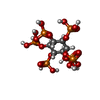 ChemComp-IHP: |
-Experimental details
-Structure determination
| Method | cryo EM |
|---|---|
 Processing Processing | single particle reconstruction |
| Aggregation state | particle |
- Sample preparation
Sample preparation
| Buffer | pH: 7.5 |
|---|---|
| Vitrification | Cryogen name: ETHANE |
- Electron microscopy
Electron microscopy
| Microscope | TFS KRIOS |
|---|---|
| Image recording | Film or detector model: GATAN K3 (6k x 4k) / Average electron dose: 49.0 e/Å2 |
| Electron beam | Acceleration voltage: 300 kV / Electron source:  FIELD EMISSION GUN FIELD EMISSION GUN |
| Electron optics | Illumination mode: FLOOD BEAM / Imaging mode: BRIGHT FIELD / Nominal defocus max: 1.8 µm / Nominal defocus min: 0.8 µm |
| Experimental equipment |  Model: Titan Krios / Image courtesy: FEI Company |
 Movie
Movie Controller
Controller






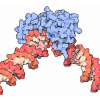

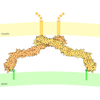
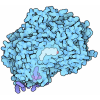
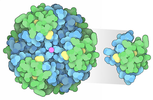



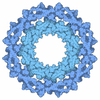



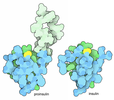
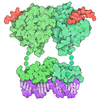
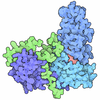

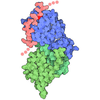


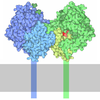
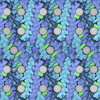



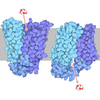
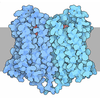
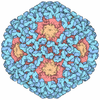
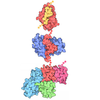
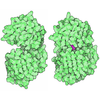

 Z (Sec.)
Z (Sec.) Y (Row.)
Y (Row.) X (Col.)
X (Col.)























